Sierra Crestellina stands out due to the limestone. It is a grey prominence amongst the green clad peaks nearby.
By Nick Nutter | Updated 29 Aug 2022 | Málaga | Parks |
Login to add to YOUR Favourites or Read Later
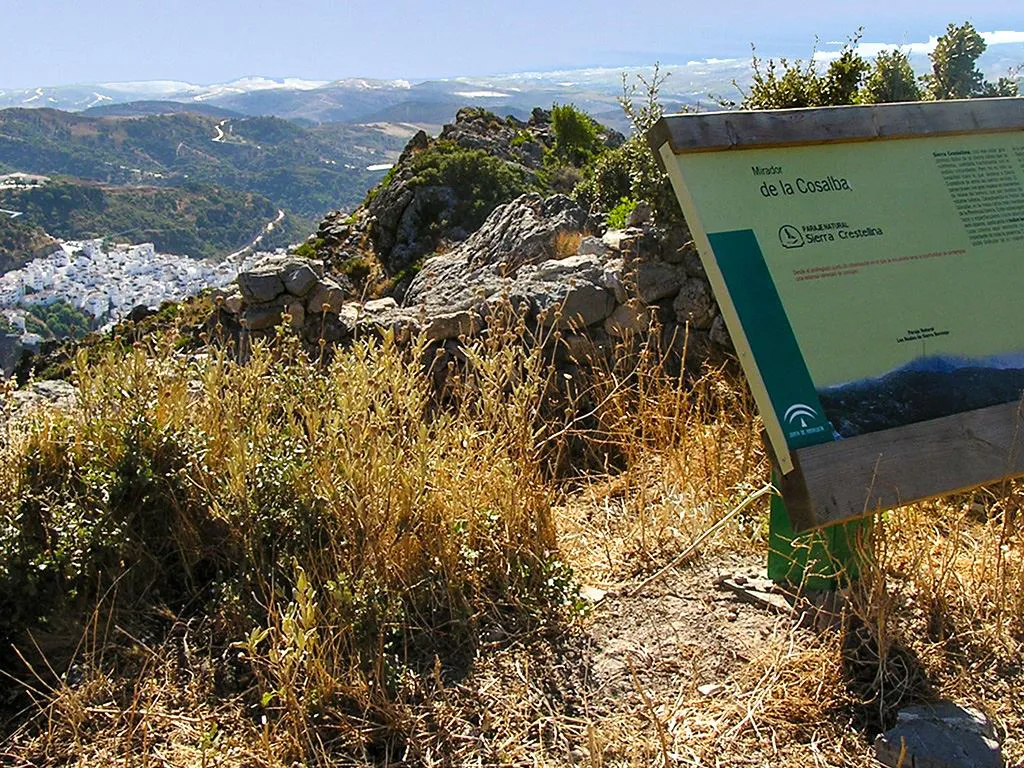
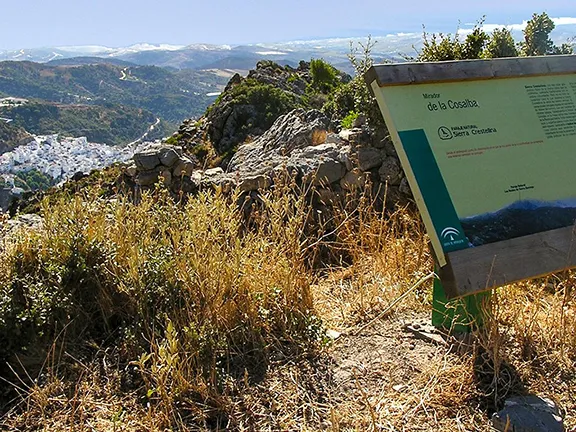
Mirador Crestellina
With easy access from near the white village of Casares, possibly one of the most photographed and painted (by artists) villages in Andalucia, the park offers walkers some of thebest views in Malaga province.
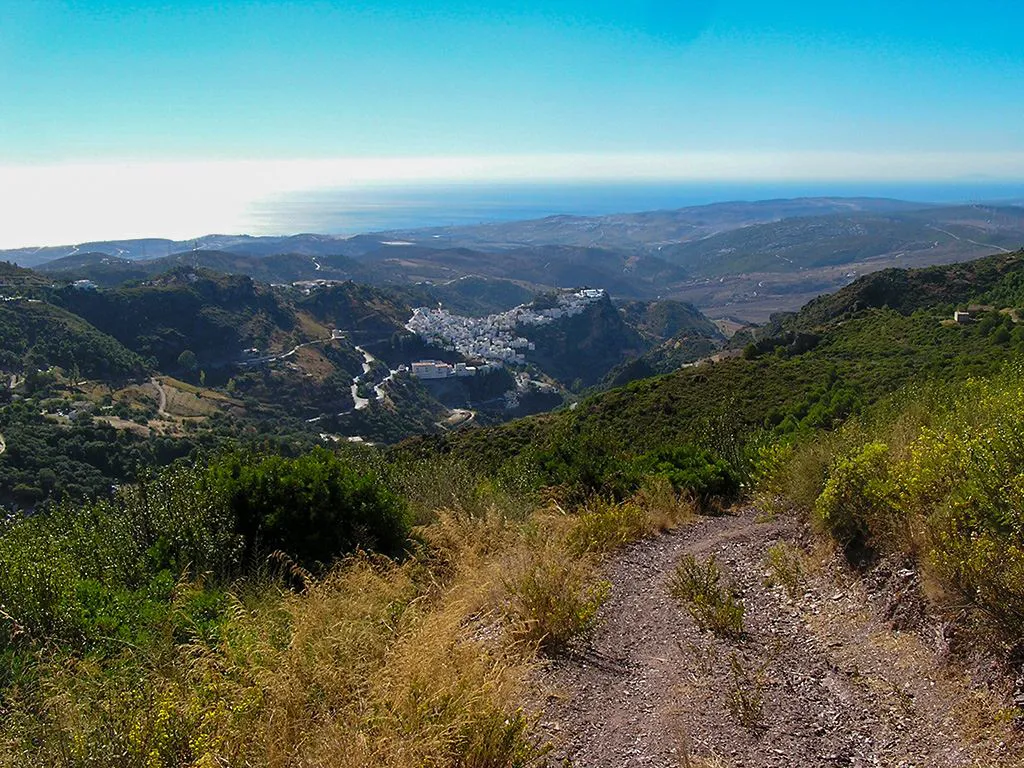
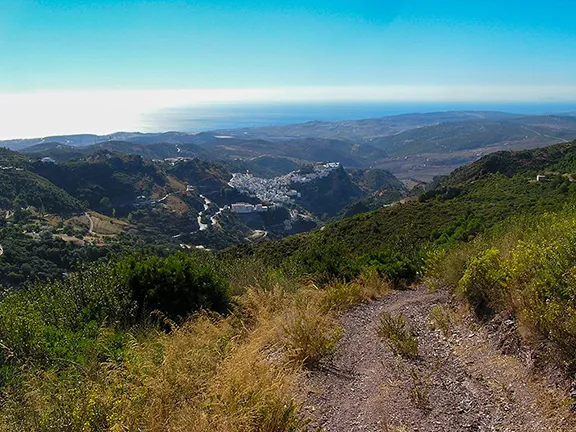
View from Miarador
The mirador known as Mirador de Catillon, below the southern tip of the ridge, on a clear day, allows you to see down onto the village of Casares in the foreground, south to Gibraltar, usually a grey, blue hump on the horizon with the coast of Africa as a hazy line beyond. To the right (west) of Gibraltar, the Alcornocales Parque Natural, is a dark green range of mountains. Griffon vultures nest on the ridge, a colony that the Junta claim is the largest in the province. You will often see the vultures gliding down the valley east of the Crestellina ridge having swooped over the Las Viñas Pass at the north end of the valley. What is remarkable is that they will be below where you are standing. Others soar over the northern end of the ridge itself which is where most of them nest. Other residents, not see as often include Bonnelli's eagles, common kestrels, peregrine falcons, Egyptian vultures and little owls. Crag martins are ever present, they appear to be chiding the trespassing walker, whilst red-billed choughs sound their chuff chuff warning cry as you approach and flash on ahead. Dartford and Sardinian warblers may be heard and not seen while the blackcap will cheekily flit from shrub to shrub as you wander through his territory.
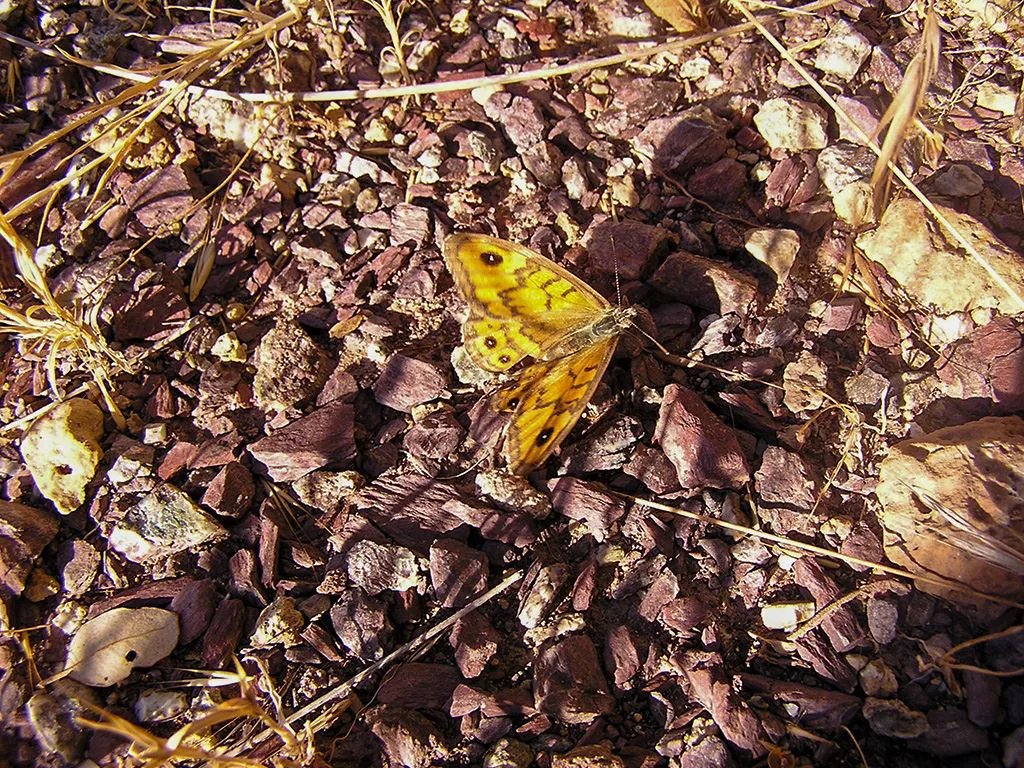
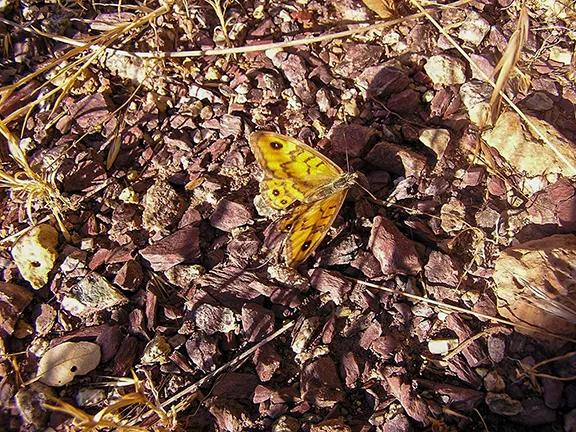
The valley bottom, near the stream, is cultivated by smallholders and the occupants of a few fincas who have huertas, allotments. Typical Meditteranean vegetation takes over on the slopes, including wild olives, pistachio, cork, gall and holm oaks and carob trees. The latter used for cattle fodder and, in the past, as a reasonable, and healthier, substitute for chocolate. Underfoot, particularly at the southern end of the ridge where the steep path takes you to a refuge, you will be wading through rock roses, dwarf fan palms and gorse. The upper parts of the ridge are more barren with straggly hawthorn and brambles between the limestone slabs.
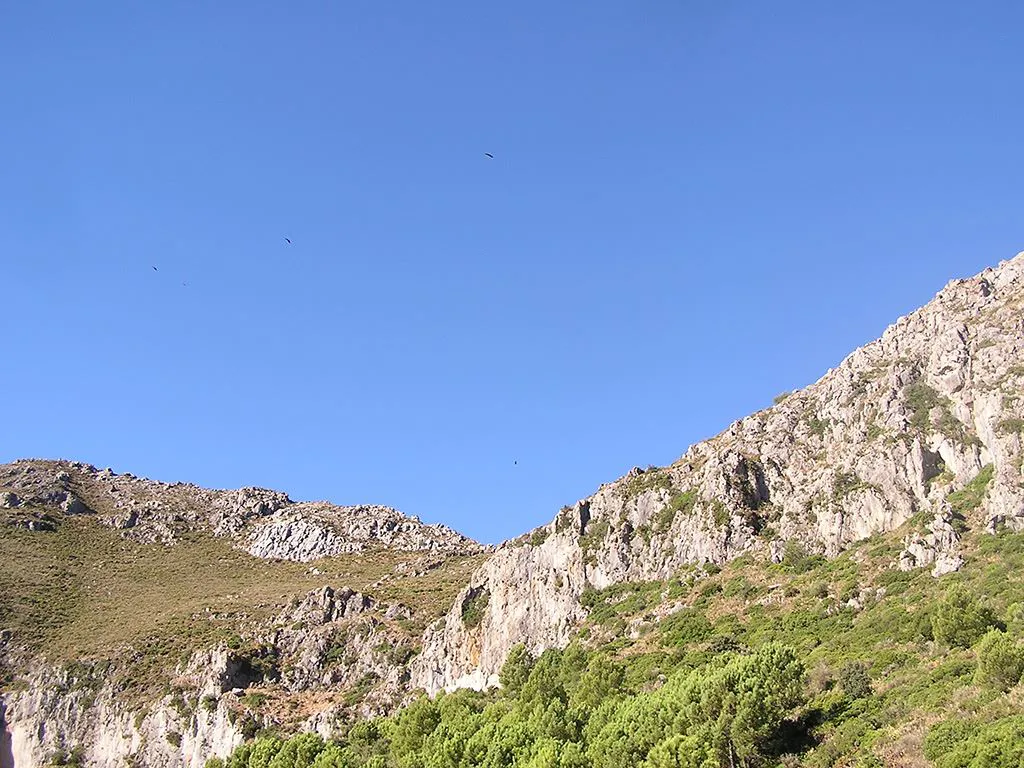
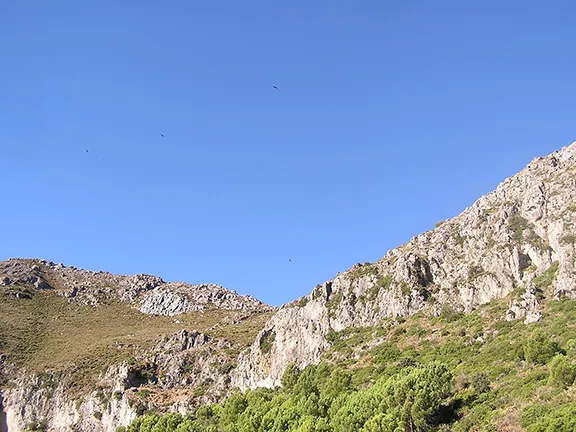
Crestellina Ridge
Sierra Crestellina Paraje Natural is known primarily for its birds of prey. On the ground though you are almost certain to see goats. An enterprising family in the valley have a herd of hundreds of goats that are milked daily and with which they make a cheese that is rapidly becoming well known. If you have time it is well worth stopping at their shop, (it's on the road between Casares and Gaucin) where you can taste the produce. Some of the goats have inevitably escaped over the years and there is now a small breeding population of wild goats on Crestellina. Always hidden from view, at least during the day, are the wild boar that are responsible for the mini excavations you will see where they have been searching for edible roots and tubers.
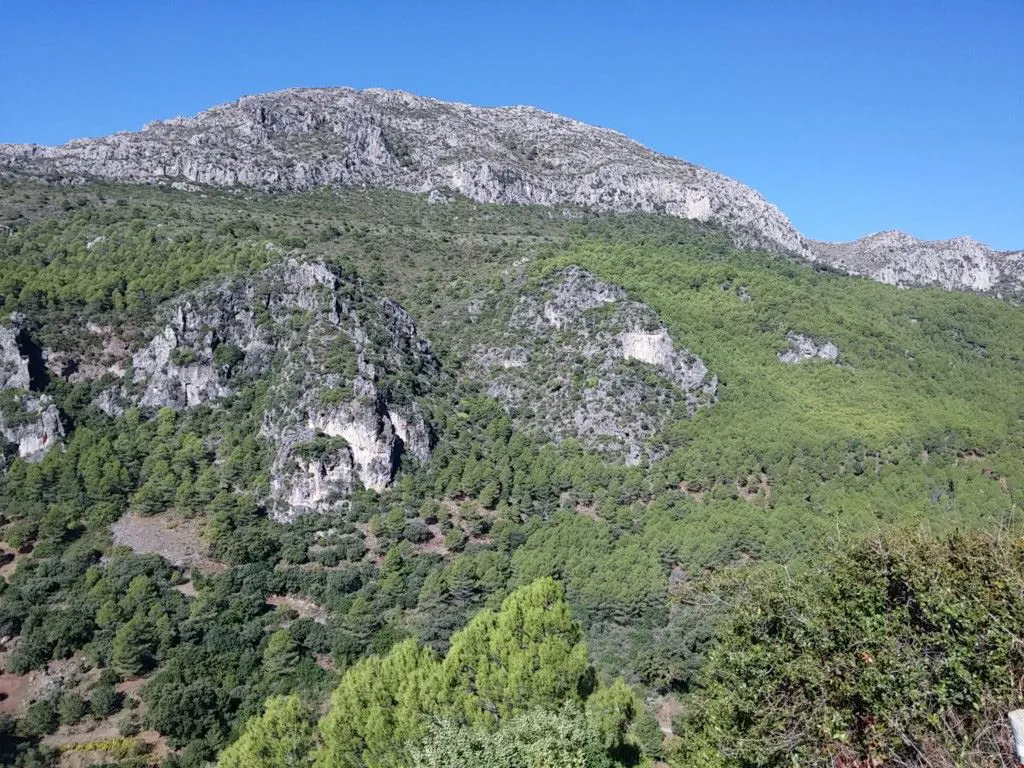
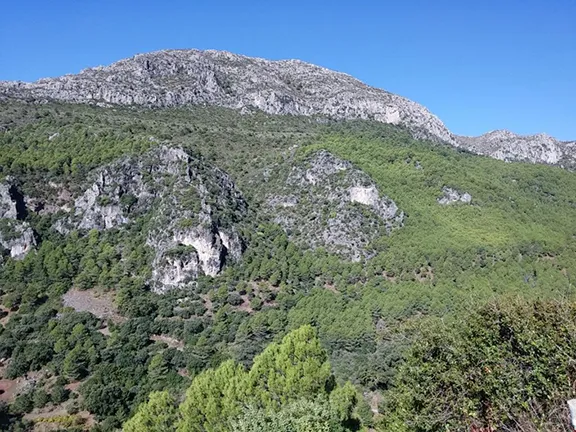
Crestellina
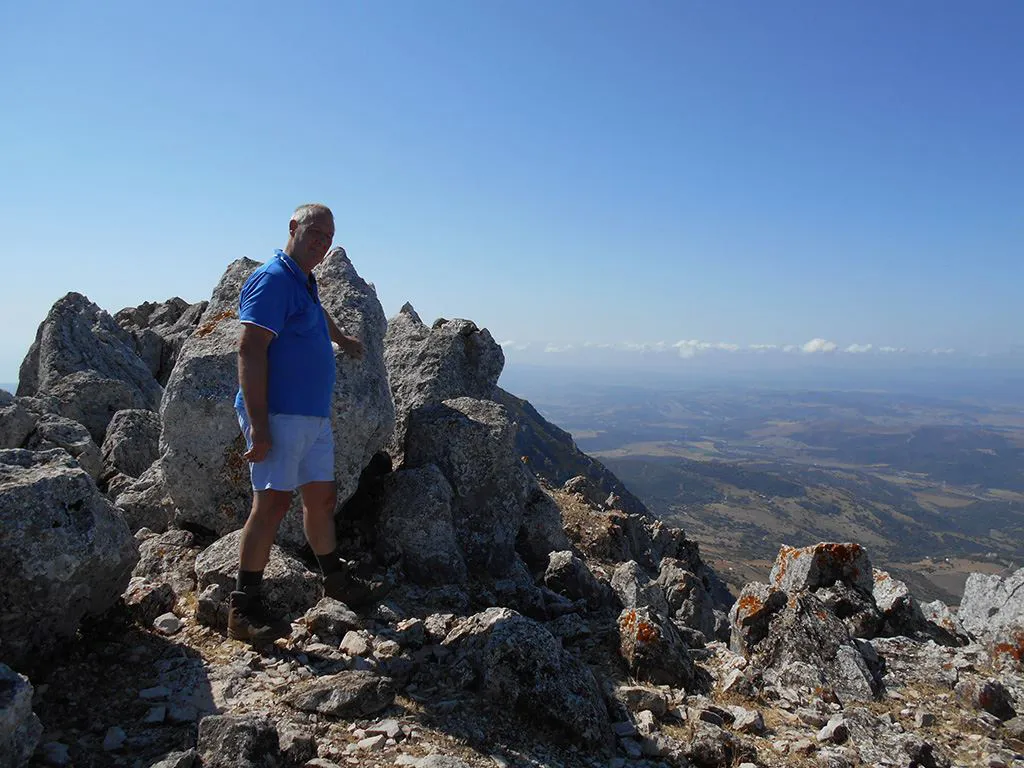
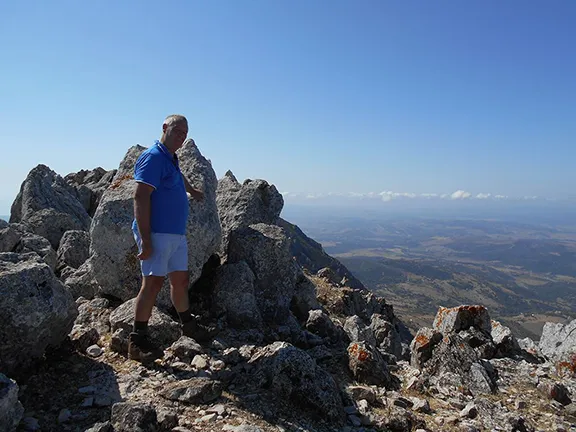
Summit Crestellina